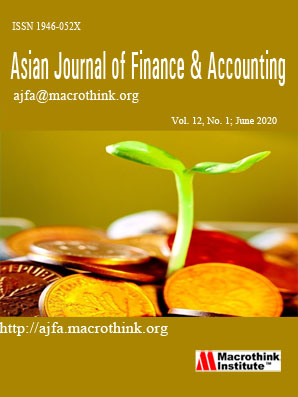The Relationship between Organization Strategy, Fixed-Assets Investment and Earnings Quality
Abstract
One of the important sources for investors to evaluate is the information provided in the financial statements disclosed by firms. Past researches consider that worse financial statement quality has higher information risks from the aspect of information risks but they ignore the investors’ degree of tolerance and aversion towards risks. Furthermore, the accounting signals hidden behind financial statements can be considered as important information for investors to evaluate the futurity of enterprises. Thus, it is our main research topic as how to apply accounting signals on investment risks. This study uses data of the U.S. during 1991-2008 to review the influence of accounting signals on investment risks. Result finds that in the investment management essentials in firm-wise, the accounting signals for capital expenditure ratio per person can lower the investment risks no matter in cost leadership firms or differentiation strategy firms. For the investment management essentials in industry-wise, we have the below findings: In cost leadership strategy samples, there is competitive convergence if enterprises over-pursue the fixed asset turnover ratio. In the samples that adopt differentiation strategy, increasing the ixed asset turnover ratio can enhance organization’s competitiveness and reduce investment risks. This is the first study that applies capability index of accrual quality (investors’ degree of tolerance and aversion towards risks) on researches of accounting signals and discovers that competitive convergence exists in organizations that adopt cost leadership strategy.Submission of an article implies that the work described has not been published previously (except in the form of an abstract or as part of a published lecture or academic thesis), that it is not under consideration for publication elsewhere, that its publication is approved by all authors and tacitly or explicitly by the responsible authorities where the work was carried out, and that, if accepted, will not be published elsewhere in the same form, in English or in any other language, without the written consent of the Publisher. The Editors reserve the right to edit or otherwise alter all contributions, but authors will receive proofs for approval before publication.
Copyrights for articles published in MTI journals are retained by the authors, with first publication rights granted to the journal. The journal/publisher is not responsible for subsequent uses of the work. It is the author's responsibility to bring an infringement action if so desired by the author.








